Main menu
Common skin conditions

NEWS
Join DermNet PRO
Read more
Quick links
Introduction Demographics Causes Clinical features Variation in skin types Complications Diagnosis Differential diagnoses Treatment Prevention Outcome
Atopy refers to the genetic predisposition of experiencing an exaggerated immune response to allergens via the overproduction of immunoglobulin E (IgE). The term is derived from the Greek word meaning “the state of being out of place”.
The atopic triad typically consists of atopic dermatitis (skin), asthma (airways), and allergic rhinitis (nasal mucosa). Other atopic conditions include food and drug allergy, allergic conjunctivitis, urticaria, angioedema, and anaphylaxis.
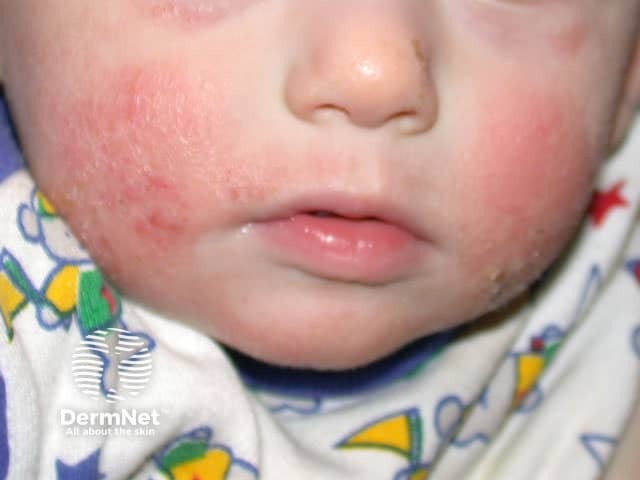
Atopic eczema

Lichenification and hyperpigmentation on the knees in skin of colour due to atopic eczema
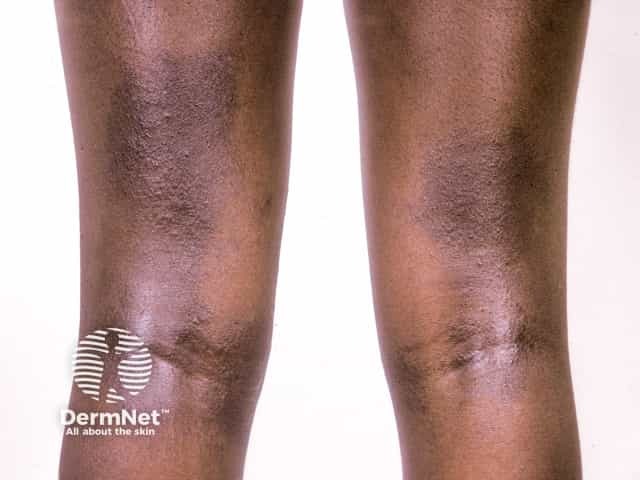
Lichenification and hyperpigmentation in atopic eczema on the back of the knees and thighs
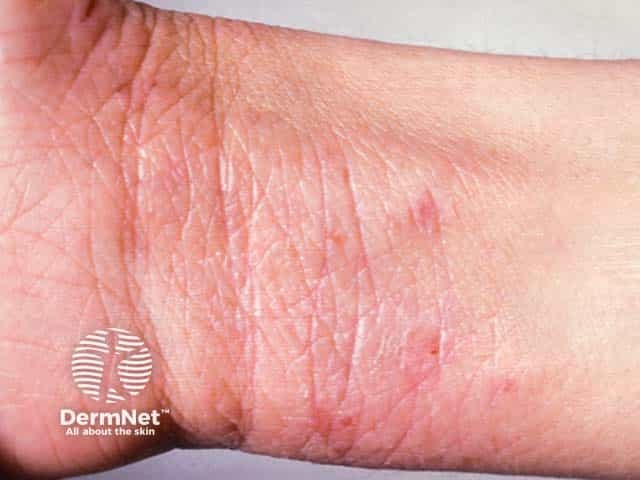
Lichenified atopic eczema on the volar wrists
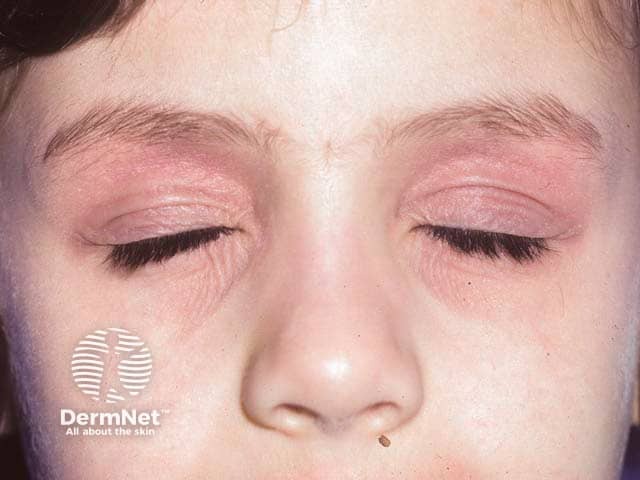
Bilateral redness and lichenification of the lids due to atopic eczema
Click here for more images of atopic dermatitis
The prevalence of atopy is approximately 10–30% in developed countries. Family history is the major risk factor.
Although atopic diseases can occur independently, they often coexist. The progression from atopic dermatitis in infancy to other atopic diseases such as asthma and allergic rhinitis in adulthood is called the ‘atopic march’.
While the specific cause is not well understood, a gene-environment interaction is thought to play an important role. Triggers that have been identified include viral respiratory infections, exercise, certain drugs, climatic factors, and psychological factors. Multiple genes with effects on IgE synthesis are also likely involved as well as changes in the skin microbiome potentially affecting skin barrier function.
The pathophysiology of atopy involves mast cell activation which leads to an inflammatory cascade of lipid mediators, cytokines, and histamine.
Clinical presentation of atopy will vary depending on the specific atopic disease.
Atopic conditions that may present with cutaneous features include:
Asthma and allergic rhinitis in isolation do not typically present with predominant cutaneous features.
There are ethnic variations in patterns of atopic cutaneous diseases. A higher prevalence of atopy is found in developed and industrialised countries. This is explained by socioeconomic status along with environmental and psychosocial factors.
There is some evidence that early infantile exposure to bacteria and protozoa may result in a reduced incidence of atopic disease compared to populations that are brought up in more hygienic conditions (the hygiene hypothesis). Immigrants are more at risk of developing atopy because of exposure to a new set of allergens.
Complications of atopy will vary depending on the specific atopic disease. The number of comorbidities and adherence to treatment will influence the risk of potential complications.
For information on atopic dermatitis complications, see complications of atopic dermatitis.
A severe food allergy with anaphylaxis can lead to life-threatening respiratory distress and is a medical emergency.
Atopy is usually diagnosed clinically and investigations are seldom required.
Investigations that may aid diagnosis include:
Other investigations could be added depending on the need to explore differential diagnoses, such as:
It is important to remember that increased IgE is not specific for atopy and total IgE by itself should not be used as a diagnostic tool.
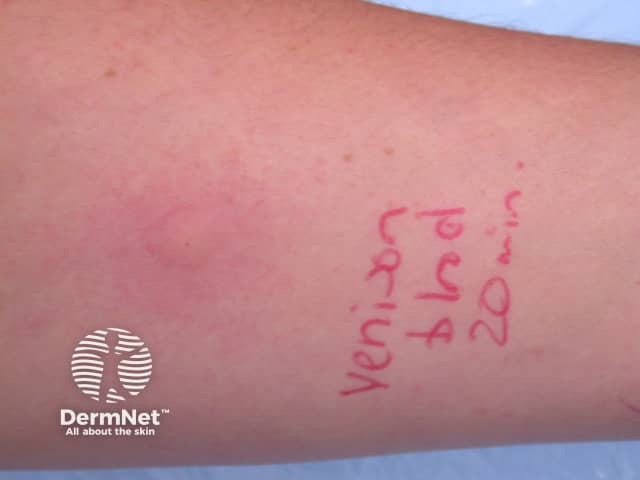
A positive prick test wheal at 20 minutes
Since atopy includes multiple diagnoses related to an overactive immune system, there is a long list of differential diagnoses to consider, these include:
It is often found that control of one atopic condition generally improves the control of the others. General measures include:
Specific measures to treat atopy will depend on the specific atopic condition.
For example, atopic dermatitis treatment may include:
And in more severe and protracted disease:
For more information see treatment of atopic dermatitis.
Atopy cannot be prevented since it is genetically determined. However, using the general measures described above can help minimise symptoms and avoid potential complications. Identifying and avoiding specific triggers is also important, where possible.
There is currently insufficient data to support the use of probiotics to prevent allergies and atopic conditions in children.
The prognosis for atopy is generally good, although the vulnerability of the immune system tends to persist lifelong. Ultimately, outcomes depend on the severity of the atopy and adherence to treatment.